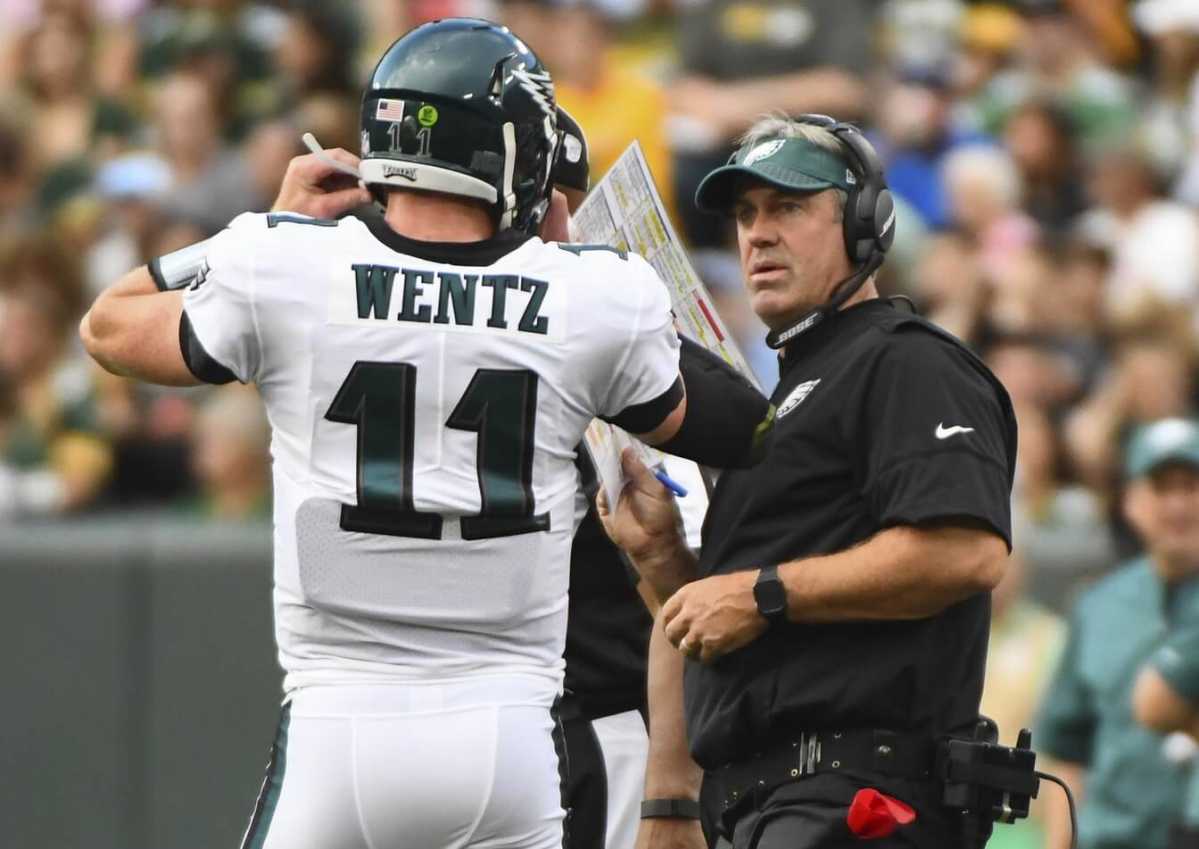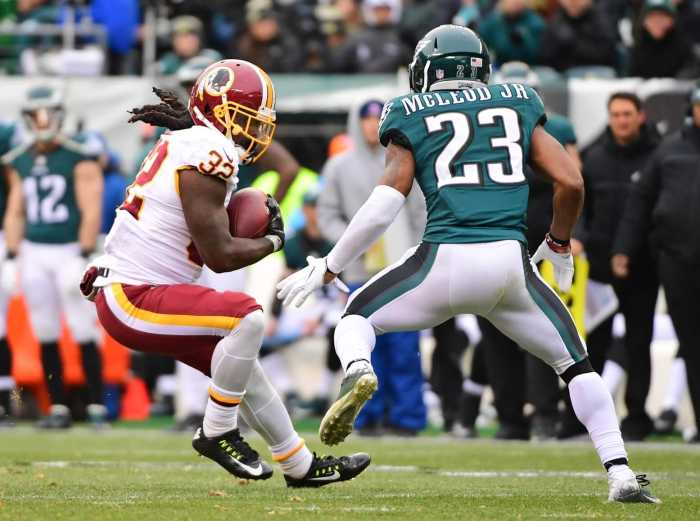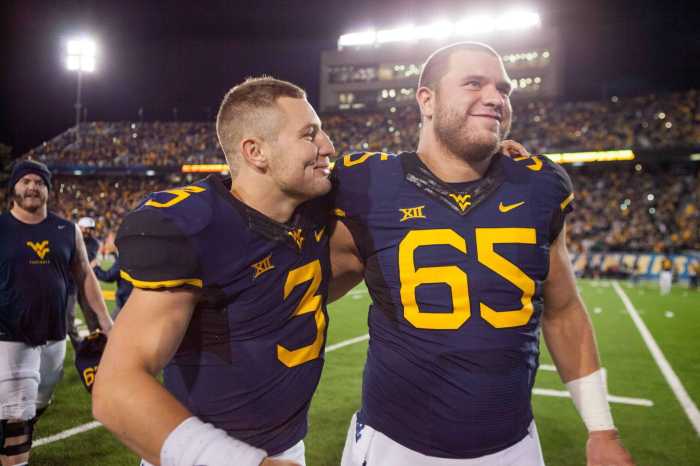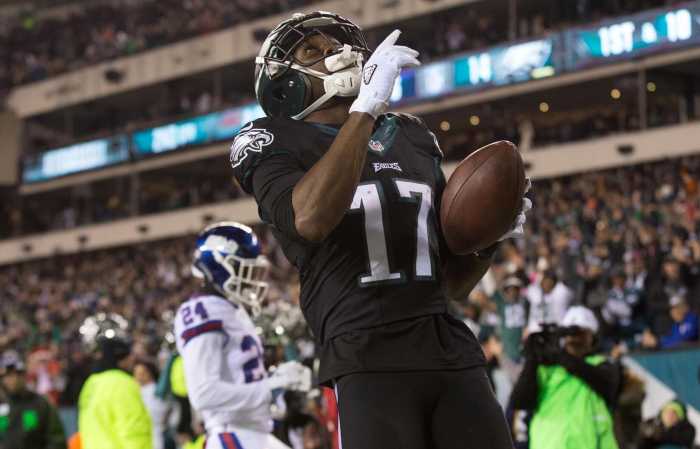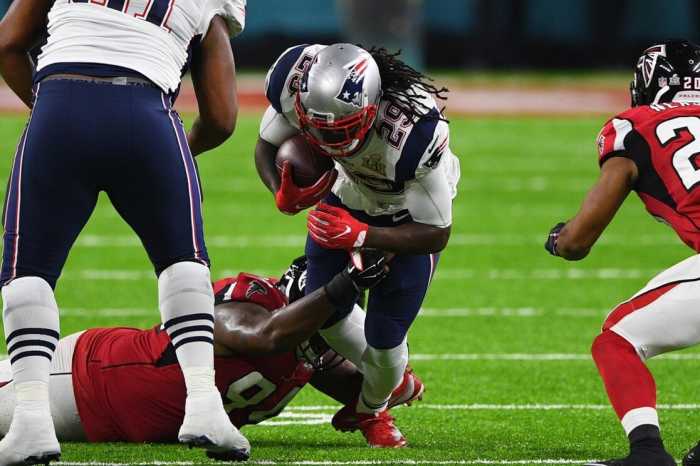When it comes to discussing the rookie season of Carson Wentz, there is normally a string of narratives that follow. Whether that be his incredibly high volume of passes, his incredibly hot start, or pushing through the rookie wall despite a lack of outside help, whichever conclusion you come to…it is usually one of promise. But there’s one other aspect of last year’s second overall pick that is consistently bought up without much meat to the bone. It’s spoken about so avidly among fans and media but it rarely contains any kind of detail or reasoning. I’m talking of course, about mechanics. It’s very easy to comment on footwork or throwing motion, but without knowing what to look for it’s a tricky topic to talk about.
A lot has changed since Wentz first entered the league…but the one thing that kept cropping up was his footwork and mechanics. So, during the offseason, Wentz took it upon himself to pay a visit to Adam Dedeaux, a quarterback guru who has previously worked with both Matt Ryan and Tom Brady, in order to refine these intricacies. But life isn’t a game of Madden. It’s not like you can visit a quarterback guru and have him boost your agility rating by 5 or throw power by 3. So what’s changed in the playing style of Carson Wentz?
I decided to look back at the preseason debut of Carson Wentz. That game against the Tampa Bay Buccaneers in which fans roared upon his taking to the field, and compare it to what we saw on Thursday night against the Packers. It turns out there are some big differences.
Footwork:
Footwork is one of the most commonly talked about areas that Wentz needed to improve ahead of this season and it’s easy to see why. There were too many times last season where the rookie quarterback would either have his feet planted in the turf which led to some unsettling sacks and poor decisions with a lack of scanning. Contrarily, it also sometimes saw Wentz drift to one side of the pocket and struggle to transfer the weight from one side of his body to the other. His feet were sometimes pointing wayward of his target or where his shoulders were aligned.
The play below exemplifies that. Wentz makes a subtle shuffle away from pressure, but ends up short-arming the pass. His feet aren’t square to his shoulders and the ball ended up sailing after his heel popped. Sailing passes was something that Wentz struggled with massively last season…and a consistent throwing motion all starts at the base.
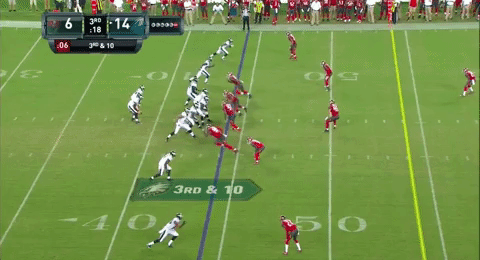
If we compare that to what we saw against the Packers, the previous flaw becomes clear. Wentz is now keeping his feet square on a dropback (you’ll see this consistently throughout the article) and at an equal distance apart throughout his throwing motion. It gives him a solid base to build off and even with pressure coming, Wentz was able to square up and sling it out into the flat.
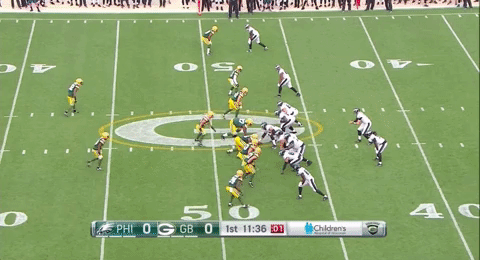
If we compare that dropback to the one we see below, even though Wentz is still adjusting quickly, notice how he’s dragging his front foot back and repositioning. Whereas above, Wentz is taking one step and almost hopping his body to the side in the same way we see Matthew Stafford, one of the best pocket passers in the game, do on a regular basis. The motion below meant that he could’t get his feet set quickly enough to fire an accurate pass. The ball was thrown slightly over Nelson Agholor’s head, with the QB’s feet pointing slightly away from his target.
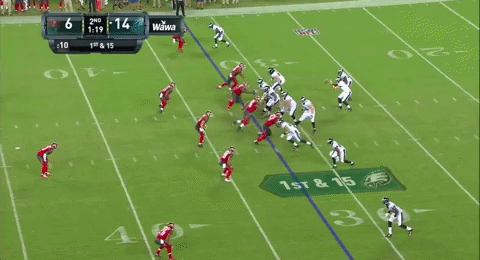
Wentz is now much lighter on his feet than he was this time one year ago. His weight is spread across his legs evenly with his back leg ready to load up at any point. This wide stance also gives him a much better balance in the pocket. After being knocked by an oncoming tackler, Wentz stumbles to the side slightly and then slings the ball over the middle. If Wentz was taking “tip-toe” steps around the pocket moving his legs closer together, that hit may have forced a messy play. But a lower center of gravity enables Wentz to navigate the pocket far easier and bounce around if needed.
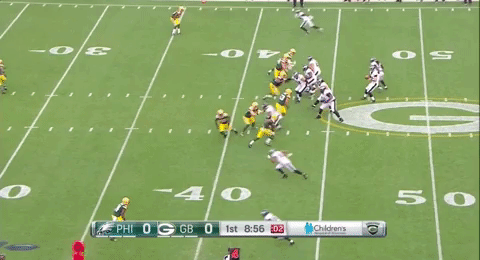
The eyes:
Another criticism surrounding Wentz after last season was how he scanned through his reads. It felt like at times Wentz would already have a pre-determined target or at least lock onto the first receiver in that progression, not moving his eyes off of him. This enabled defenders (CC: Seattle) to read where the ball was going to go, make the adjustments and blow up the play. Even against the Bucs in preseason, the flaw was present.
Wentz does well to evade pressure and force a ball into the hands of Zach Ertz, but there were three other options open visible on the TV-camera alone. From the moment he took the ball, Wentz was staring down his receiver…and against a Bucs defense sitting in zone coverage, this meant that FIVE defenders literally closed in around Ertz by the time he had the ball in his hands. It’s not the end of the world, nor was it a telling sign…but perhaps a foreshadowing of how teams were able to chain the Eagles Offense down even further.
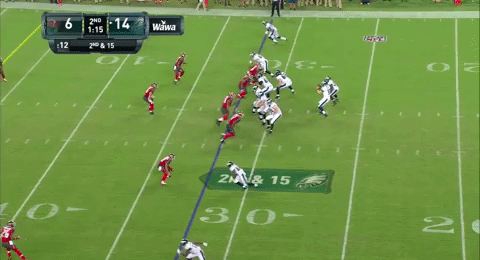
The same can be seen in the play below, but the only difference here is that while looking for his receiver, Wentz didn’t see the oncoming pressure and short-armed the pass into harms way.
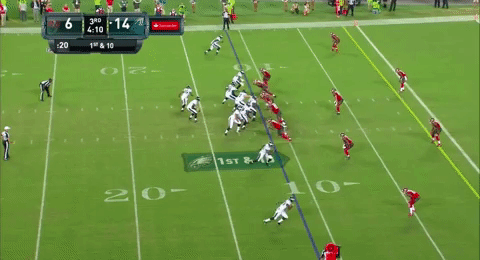
One year later and it’s a very different story. There’s no more short-arming passes and his vision starts over the middle and drifts over to his target as pressure arrives. Wentz keeps his shoulders and feet perpendicular to his target throughout his progression and shifts them to the left ever so slightly. His body is now following his eyes throughout is progression and while we didn’t really get a great chance to see this in action on Thursday, we can see enough to know there’s progress.
Decisions inside the pocket
There wasn’t one aspect of Wentz’s mechanics that stood out as horrific by any stretch of the imagination. But as the footwork flailed, so did the throwing motion and progression. Quarterback throwing mechanics are essentially a string of dominoes, if just one falls ever so slightly…that entire chain is going to collapse. But if there’s one sturdy domino at the end, then it can keep the chain upright.
What all of this equates to is presence inside the pocket. How does Wentz navigate the pocket, sense oncoming danger after he’s stepped up to make the throw, and what does he do with the ball? There were a few impressive scrambles against the Bucs, but for now let’s just focus on inside the pocket. As the pressure surrounds Carson Wentz, the Eagles quarterback has his vision impaired and still tries to loft a ball over the top. The ball goes streaking towards the sideline, but knocked when he throws, it’s a dangerous throw to make blind.
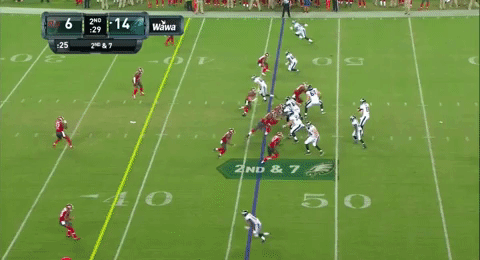
Let’s fast forward 12 months. Carson Wentz detects oncoming pressure straight away and instead of trying to force the pass, he pushes his body weight around the pressure, meaning the oncoming pass-rusher has a less than ideal angle, giving Wentz a lane. He steps up and drills one over the middle to Mack Hollins who took it to the house in emphatic style. Wentz has become incredibly evasive when it comes to pressure and this has little to do with his offseason work. Just look at that Matrix style move against the Giants and the rest writes itself.
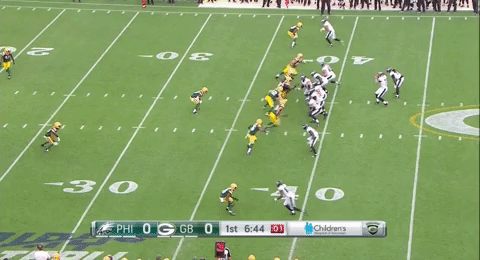
In his first taste of NFL action, Wentz didn’t exactly have an easy night. Locking onto his first read, Wentz tried to evade pressure but ended up side-arming a ball out of harms way. The reception was made, but at the wrong time and wrong place, this could have been classed as a fumble or been hit slightly earlier.
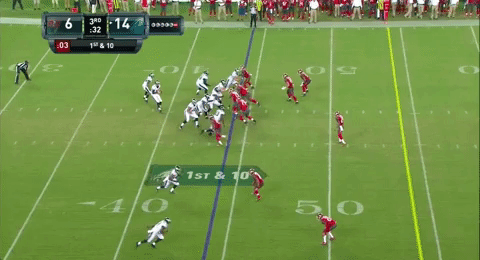
We know how mobile Wentz is, but he;s become a lot smarter with the ball. Instead of blindly throwing a pass to the sideline or scrambling and risk taking a hit, Wentz is simply okay with taking a sack and that’s sometimes all you could ask your quarterback to do. On a play-action look, Wentz sees the pressure and immediately tucks the ball away and protects himself from the hit. Sometimes taking a sack can bring damage limitation. Not every play has to be an Aaron Rodgers ballet display or a Cam Newton scramble. Protect the ball, protect the team.
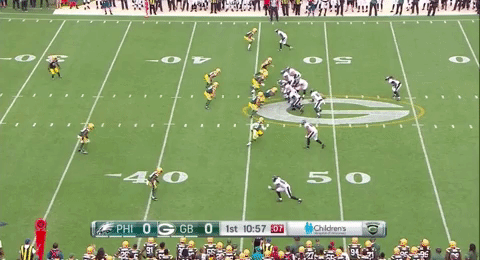
It’s only a small sample size. Wentz only attempted four passes against the Packers, but that in its own right makes this even more staggering. The fact that you can see a visible difference in just four passes speaks volumes of how far Wentz has come in not only his rookie season, but during his offseason work with a renowned quarterback guru.
It’s very easy to discuss mechanics…but when you can visibly see the differences a year can make and the impact that they can have, it’s just as easy to get excited about what the future holds for the face of the Eagles franchise.
Mandatory Credit: Benny Sieu-USA TODAY Sports

